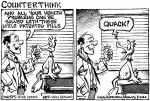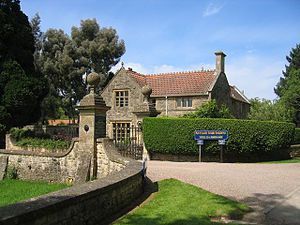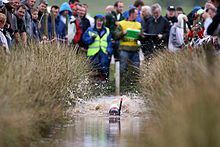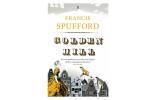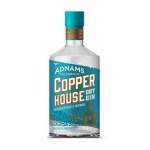Martin Fone's Blog, page 319
September 8, 2016
Quacks Pretend To Cure Other Men’s Disorders But Rarely Find A Cure For Their Own – Part Forty Two
The Advanced Medical Sciences Institute
One of the most common traits that we have observed amongst the practitioners of quackery is never to be shy in proclaiming the virtues of your panacea. A case in point is X W Witman and his Diagraphoscope which toured the States in the early years of the 20th century.
According to contemporary adverts it was “the most truly marvellous invention of the age” which “has revolutionised the medical world”. In essence it was one step beyond an X-ray machine enabling the user “by virtue of this phenomenal machine’s power” to see with the naked eye “every organ in the patient’s body”. “It makes” the advert goes on “the formerly much-wanted X-ay look like a toy”. “The screen is placed on the chest or other portion of the body and every interior condition of happening is immediately visible to the naked eye”.
The rays emanating from the machine were so powerful that they would pierce “almost three feet of solid wood and reveal a copper cent on the opposite side” but, naturally, were not injurious to man. The screen through which the insides of the patient could be viewed was made of a compound “which cost in the rough just five times its weight in gold”. Inevitably, this made the diagraphoscope phenomenally expensive but Witman made a virtue of this. It was so expensive a machine that “only the most elaborately equipped hospitals in Berlin and Paris have been able to stand the gigantic cost… let alone the practical impossibility of securing specialists whose skill is equal to the successful operation of its parts.”
So, in a nutshell, Witman was doing the great American public a favour by touring the country giving demonstrations of a machine that was beyond the pocket and wit of the American medical community. The consultation was free in the first week that he pitched up in a city or town, after which the customary consultation fee of $5 was charged. Hours of operation were between 9 and 12, 2 and 4 and 7 to 8, allowing good time for a hearty lunch and dinner.
Not everyone, though, was taken in by the eighth wonder of the world. An observer of potentially fraudulent advertising, one Karl E Murchey, was singularly unimpressed by the machine, describing it as a circular tube full of coloured liquid, with a photographer’s hood through which the doctor viewed the patient and an electric buzzer with which appropriate sound effects were made. After a demonstration which was a classic set up and where the patient’s condition was miraculously discovered just in time to save him, Murchey obtained a warrant for Witman’s arrest but by the time it had been prepared he had scarpered.
But the net was closing in on Witman. He pitched up in Louisville, Kentucky in 1912 and as per usual advertised his presence and the wonder of his machine in the local papers. These adverts came to the attention of the State Board of Health who promptly charged Witman and his associates with failing to file certificates naming those conducting the business and for practising medicine illegally. Up before the beak Witman was fined $700 and within an hour the offices had closed down and moved on.
With heightened scrutiny and more onerous regulations the days of the most marvellous invention of the age were up.
Filed under: Culture, History, Science Tagged: Advanced Medical Sciences Institute, Karl E Murchey, the diagraphoscope, X W Witman








September 7, 2016
Rural Rides (26)
The Cotswolds
After far too long the metaphorical Mr Cobbett was able to release his trusty (and rusty) steed and head off towards that beautiful part of England around Chipping Campden in the heart of the Cotswolds. We spent a couple of nights in village of Mickleton at the Three Ways House, home of the world-famous Pudding Club. Coincidentally, we timed our visit with a Pudding weekend – it meant that parking spaces were at a premium – but were able to sample their wares. My spotted dick with a huge jug of custard was delicious.
One of the principal attractions of the gaff was that it was within walking distance – a couple of miles or so as the crow flies across the undulating fields – of one of my favourite gardens at Hidcote Manor. The walk was pleasant enough and not too arduous and we were blessed with fine weather and firm dry conditions underfoot. One of the benefits of arriving by foot is that you feel amply justified in taking advantage of the many benches dotted around the garden and take in the wonderful scenery and drink in the floral scents.
The garden was originally designed by an American, Lawrence Johnston in around 1910 and is heavily influenced by the work of Alfred Parsons and Gertrude Jeckyll. The clever use of stone walls, box hedges, hornbeam and yew creates a series of areas or outdoor rooms, each with their own theme – the White Garden, the Fuchsia Garden (magnificent on our visit) and the like. Each time you go through an archway or turn a corner you encounter new delights and a different vista. It is well worth a visit.
Just down the lane is to be found Kiftsgate Court Gardens which, unlike the National Trust run Hidcote, is privately owned and only allows the great unwashed to tramp around between 2 and 6 o’clock. Perched high up the garden offers wonderful views of the vale of Evesham and the surrounding countryside.
The gardens are the work of three generations of women. Heather Muir started work in the 1920s creating a paved formal garden in front of the portico of the house. The steep slope was tackled and a summer house was built half way down. A path leads you on to the Lower Garden complete with a semi-circular pond. The views are stunning. Muir’s work was carried on from 1950 by Diany Binny and then her daughter and current owner, Anne Chambers, bore the responsibility from the 1980s.
Surrounded by a magnificent yew hedge, planted in the 1930s, is now a rather incongruous pool with water feature, adding a touch of modernity to what is otherwise a garden with a traditional feel. It was originally a tennis court but the upkeep proved too expensive. The other notable feature of the garden is the Kiftsgate Rose – alas, it had finished flowering by the time of our visit – which, at over 50 feet high and 80 feet wide, is the largest climbing rose plant in Britain.
We retraced our steps and rewarded ourselves with a couple of pints at the Kings Arms in Mickleton where TOWT was stung four times by a wasp which managed to inveigle its way into her trousers. At least it gave us the opportunity to rediscover the delights of the Schmidt Sting Pain Index.
The countryside can be a dangerous place at times.
Filed under: Culture, History Tagged: Gertrude Jeckyll, Heather Muir, Hidcote Manor Gardens, Kiftsgate Court Gardens, Lawrence Johnston, Schmidt Sting Pain Index, the Kiftsgate rose, the world famous Pudding Club, Three Ways House in Mickleton, William Cobbett








September 6, 2016
Double Your Money – Part Seven
Overend, Gurney and Company
Sticking to you knitting is a wise adage, particularly in the financial world. Companies that have made a tidy business in a certain niche venture into pastures new at their peril. I worked for a company that was successful in its own way in a fairly limited sector but steady as she goes was too boring for the new Chief Executive. He moved the company into new, exciting areas but, inevitably, he managed to bring the whole company down.
Students of financial history will nod sagely and recall the story of Overend, Gurney and Company which for a while in the first half of the 19th century made a tidy business in the arcane world of bill discounting, where bills of exchange are traded prior to their maturity date at a value less than the par value of the bill. Thomas Richardson, a clerk to a London bill-discounter, spotted that whilst merchant banks engaged in bill discounting as an adjunct to their main business, there was room in the London market for a company that specialised in buying and selling bills of exchange at a discount.
Teaming up with John Overend and deploying capital supplied by Gurney’s Bank, the firm was formed in 1800. Samuel Gurney joined the firm in 1807 and took over in 1809. The company expanded rapidly, soon having a turnover twice that of all its other competitors combined, and was regarded as the greatest discounting-house in the world. During the financial crisis of 1825 it was able to make short-term loan to other banks, earning it the sobriquet, the bankers’ bank.
When Samuel Gurney died in 1856, instead of concentrating on what they did best the directors launched a new initiative, chasing attractive long-term investments like railway stock, plantations in Dominica and shipping lines that didn’t win any business. Three of their investments lost the staggering sum of £5.2m alone. Walter Bagehot commented, “one would think a child, who had lent money in the City of London would have lent it better”.
Their principal business required a high degree of liquidity and as the results of imprudent investment s came home, the balance sheet showed liabilities of £4 million and assets of £1 million. The business was incorporated as a limited company in July 1865 and taking advantage of a buoyant stock market the directors sold shares of £50 for a deposit of £15.
Timing is everything and the bank’s timing was unfortunate. There was a rapid collapse in stock and bond prices, commercial credit was tightened and Overend Gurney and Company had no option but to go cap in hand to the bank of England. Central bankers were more hard-hearted in those days than they are now and refused to bail out the bank, causing it to suspend payments on 10th May 1866 and the shareholders were required to pay the balance of £35 on their shares to a company that was effectively bankrupt and had no prospect of generating profits.
Indeed, the bank went into liquidation in June 1866 precipitating a financial crisis which saw the bank rate rise to 10% for three months and driving many firms and other banks to the wall. Many of the Gurney clan lost their fortunes but the Gurney bank, a separate legal entity, escaped pretty much unscathed . Angry shareholder sought to bring the six directors of Overend Gurney and Company to account for fraudulent misrepresentations in their share prospectus. At their trial at the Old Bailey the judge, Lord Chief Justice Sir Alexander Cockburn, pontificated that they had been guilty of a “grave error” but not criminal behaviour and the jury acquitted them.
Karl Marx viewed the bank as the epitome of all that was wrong with capitalism.
Filed under: Culture, History Tagged: financial crash of 1825, financial crash of 1866, Karl Marx, Lord Chief Justice Sir Alexander Cockburn, Overend Gurney and Company, Samuel Gurney, sticking to your knitting, the bankers' bank, Thomas Richardson








September 5, 2016
A New Day Yesterday – Part Twenty One
I reported some months ago that having retired instead of piling on the avoirdupois as I had anticipated, I found I had lost a stone in next to no time. My weight has now stabilised so thoughts that I had acquired a tapeworm as a tenant or that the weight loss was the harbinger of some dread disease can, perhaps, be put to bed, at least for the time being. TOWT, rather uncharitably I thought, ascribed the change in my size down to being deprived of boozy lunches and gargantuan meals that were the natural bedfellows of a career in financial services.
But now I think I have put my finger on the cause, if a report called Health in a Hurry, written by Emma Lloyd and published by the Royal Society for Public Health, is to be believed. The average commute, apparently, is 55 minutes a day, to and from work, although some 3 million have a journey of two hours or more a day and 900,000 a commute of over three hours a day. Of the 1,500 commuters who were surveyed around 40% claimed that their commute reduced their ability to exercise, a similar number claimed that their travels to and from work ate into the time that they had available to sleep and around a third reported increased snacking or fast food consumption.
Focusing on foodstuffs, respondents were presented with a list of twelve items and were invited to identify which, if any, they consumed during their journeys to and from work. The most popular item on the list was a chocolate bar followed by a packet of crisps. Also featuring towards the top end of the popularity charts were fizzy drinks, fast food meals, muffins and alcohol. The median amount of calories consumed by the commuter a week through this in-transit grazing came to 767. So there we have it – the stress of commuting causes us to guzzle unhealthy foods to the tune of around 800 calories a week.
The principal causes of commuter stress are unsurprising – journey delays, overcrowding, anti-social behaviour, uncomfortable temperatures and journey length. Naturally, the commuter needs to have some pleasure in their life and brighten up their dull existence by treating themselves to something naughty but nice. And, of course, station forecourts these days offer myriad temptations. It is hard to find the ticket barriers for all the fast food emporia, coffee shops and bun stores. To use a glorious word which I shall henceforth adopt and endeavour to use at every opportunity, railway stations are obesogenic environments. No wonder the commuter succumbs.
The report goes somewhat off the rails in my view when it advocates that the number of junk food outlets in stations and that there should be a health and welfare threshold to be met when rail and bus franchises are awarded. Rather, I would have thought, let’s try and eliminate what causes the stress in the first place and deliver a reliable, comfortable, timely train service.
So there we have it – my weight loss could well be down to no longer reaching for comfort foods on my commute. But then I stopped and thought about it and I can’t say I really ate any snacks on the train. Still, never one to look a gift horse in the mouth I have an excuse which is backed up by research from a Royal Society no less. It may be baloney as far as I am concerned, but if you don’t tell, I won’t.
Filed under: Culture, Science Tagged: causes of commuter stress, commuters consume 800 extra calories a week, Emma Lloyd, Health in a Hurry, obesogenic, Royal Society for Public Health








September 4, 2016
Sporting Event Of The Week (2)
On August Bank Holiday Sunday the 31st World Bog Snorkelling Championship was held just outside the town of Llanwrtyd Wells in Mid Wales. Contestants who must wear flippers and a snorkel are invited to swim two lengths of the 55 metre trench that runs through the Waen Rhydd peat bog. The winner (natch) is the one who completes the course in the fastest time.
This year’s winner was Daniel Norman from Wolverhampton who completed the course in 1 minute 26 seconds whilst the women’s champ was Anna Lohman who finished third overall in a time of 1 minute 33 seconds. The world record is held by Kirsty Johnson, appropriately from Lightwater in Surrey who completed the course in 2014 in a time of 1 minute 22.56 seconds.
Like all good ideas bog snorkelling was dreamed up by Gordon Green and a few regulars of the Neuadd Arms over a pint in 1976 although the first world championship was not held until 1985. Strong stuff, that Welsh ale!
Filed under: Humour, News, Sport Tagged: bog snorkelling, Gordon Green, Kirsty Johnson from Lightwater, Llanwrtyd Wells, Neuadd Arms, Waen Rhydd peat bog, world bog snorkelling championship








September 3, 2016
Toilet Of The Week (6)
This week’s featured carsey is no longer in service but was to be found in an outhouse in the Norwegian town of Drammen. It was a chemical jobbie and was emptied once a season.
Unfortunately, a man whilst urinating dropped his phone down the toilet and called for assistance. Cato Berntsen Larsen leapt to his aid and as a keen amateur diver volunteered to plunge into the tank. Thin enough to get into the tank he was not thin enough to get out. He was stuck there for around an hour.
The local pole sliders attended the scene, cut away the plastic front of the toilet and released Larsen who by now had sustained multiple bites to his upper arms from whatever creatures were lurking in the tank which was described as being “pretty full down there”. He was treated in hospital and given antibiotics but the phone was never recovered.
And to the inconvenience of all, the convenience is now out of action.
Filed under: Humour, News Tagged: Cato Berntsen Larsen, Drammen, man stuck down toilet








September 2, 2016
What Is The Origin Of (96)?…
Hell in a handcart
If something is going to hell in a handcart or, as a variant, in a handbasket, it means that it is going from bad to worse, deteriorating rapidly. It graphic power comes from the concept of hell being underneath and a handcart speeding up uncontrollably as it goes downhill. I used to think it was an Americanism but now I’m not so sure.
What has given me pause for thought is an image in the wonderful 15th century stained glass windows at St Mary’s church in Fairford in Gloucestershire of a scolding wife being pushed in a wheelbarrow by a blue devil. So the concept of being wheeled to hell dates back to a time before Columbus took the wrong turning. And then there is the phrase, going to heaven in a wheelbarrow, a euphemism for going to hell. This was referenced, albeit obliquely, by Thomas Adams around 1618 in God’s Bounty on Proverbs, “Oh, this oppressor must needs go to heaven! What shall hinder him? But it will be, as the byword is, in a wheelbarrow: the fiends, and not the angels, will take hold on him”.
So the concept and the idiom, if we accept Adams’ use of byword to suggest idiomatic usage, would seem to be English but it indisputable that the first usage of our phrase appeared in print in the United States. Elbridge Paige in his undoubtedly useful book entitled Short Patent Sermons published in 1841 wrote, “[those people] who would rather ride to hell in a hand-cart than walk to heaven supported by the staff of industry”. Clearly the road to hell is speedier than the way to salvation.
Going to hell in a handcart is the variant that is most regularly used here in the UK. David Cameron, no less, said a little while ago, Government policy would “save a lot of lives that would otherwise would go to hell in a handcart”. But what of the variant, hell in a handbasket?
In the days when capital punishment was more the norm than, thankfully, it is these days, the executioner, using an axe or the guillotine, would occasionally put a basket in front of the block to catch the victim’s head. If the victim was truly guilty, perhaps they went straight to hell from the basket. The American Reverend Samuel Sewell – although he emigrated there from Britain at the age of nine – used the phrase in a handbasket in a figurative sense in his diary entry for 23rd March 1714, “Governor said he would give his head in a Handbasket as he would pass it”, a voluntary decapitation the equivalent of poking your eye out.
Perhaps the first recorded linkage of hell and handbasket was made in 1865 in I Winslow Ayer’s exposition of the conspiracy of the Order of the Sons of Liberty during the American Civil War to release prisoners from Fort Douglas and burn down Chicago. Reporting a speech made by Judge Buckner Morris, he wrote, “that thousands of our best men were prisoners in Camp Douglas and, if once at liberty, would send abolitionists to hell in a handbasket”.
The Corydon Republican of 1877 recorded an extended variant, “we’re all going to hell in a cast iron hand basket” whereas Dean Koontz in Blood Risk (1977) used a shorter version, “and it all goes to hell in a basket anyway”. Handcart or handbasket – you can take your choice. Either way, the alliteration is pleasing.
Filed under: Culture, History Tagged: David Cameron, I Winslow Ayer, origin of hell in a handbasket, origin of hell in a handcart, Reverend Samuel Sewell, St Mary's Church Fairford, to heaven in a wheelbarrow








September 1, 2016
I Don’t Want To Belong To Any Club That Will Accept People Like Me As A Member – Part Twenty Six
Early chess clubs of London
For some reason I have never really got on with chess but I recognise it to be a game of strategy and skill. Perhaps I just don’t have the requisite attributes. As the game requires two to play – at least it did before the invention of computers – then it is not surprising that clubs were formed to enable practitioners to exhibit their prowess and find a ready supply of opponents.
Although an ancient game chess really took off in London in the 18th century. The style of play at the time was rather cavalier and opening gambits where pawns and even pieces were sacrificed, daring attacks and deliberate sacrifices were par for the course. Style rather than tactical mastery of position was the key at the time.
One of the first chess clubs to form in London met at Slaughter’s coffee house in St Martin’s Lane from 1747. There were to be found many of the leading exponents of the game and it was the members who first extended an invitation to the great Francois-Andre Danican Philidor to visit these shores. Philidor had already established a reputation as a chess prodigy in Paris, having played two games in public simultaneously whilst blindfolded, something that had never been done before.
In 1749 in his book, Analysis of Chess, was published in 1749 to capitalise the growing interest in the game amongst the leisured classes, Philidor espoused the key role of the pawn in the famous phrase, “les pions sont l’ame du jou”, pawns are the soul of chess, a philosophy which was contrary to the popular playing style of the day. The book also provided the basis for a more analytical approach to the game, espousing the benefits of openings, mating strategies and endgames.
Another club sprang up in the West End meeting at the Salopian coffee house in Charing Cross and a third at premises next door to the Thatched House Tavern in St James’ Street. It was here that Philidor wowed the London cognoscenti with his ability to play chess blindfolded. A contemporary newspaper reported, “He played three different games at once without seeing either (sic) of the tables. He defeated Count Bruhl in one hour and twenty minutes and Mr Maeseres in two hours (the best two players in London). Mr Bowdler reduced his games to a drawn battle in one hour and three-quarters. This exertion of M Philidor’s abilities must appear one of the greatest of which the human mind is susceptible. He goes through it with astonishing accuracy and often corrects mistakes in those who have the board before him”.
Philidor was still at in 1795, the year of his death, playing three games simultaneously whilst blindfolded at Parsloe’s, an event for which non members were charged 5 shillings to attend. With the Frenchman’s death the centre of gravity of the London chess scene moved away from the West End to the City where in 1807 the London Chess Club established itself at Tom’s Coffee House in Cornhill. In 1833 a club was established in Bedford Street in Covent Garden which hosted epic contests between the unofficial world champion, La Bourdonnais, and his challenger, McDonnell, in 1834. This was not enough to maintain the club which dissolved in 1840 but was resurrected some time afterwards as the St George’s Club in Cavendish Square.
By then, though, the game had become well established and many less august clubs sprang up to fill the void.
Filed under: Culture, History Tagged: Analysis of Chess, early chess clubs of London, Francois Philidor, La Bourdonnais chess master, les pions sont l’ame du jou, playing chess blinfolded, Slaughter's coffee house








August 31, 2016
Book Corner – August 2016 (3)
Golden Hill – Francis Spufford
Everybody has a novel in them, they say, and often that’s where it should stay, in my experience. It might be seen as a bit of a gamble for an accomplished writer of non-fiction – his debut account of the Scott polar expedition, I May Be Some Time, won him literary prizes – to turn his hand to a novel but Spufford has produced an astonishingly impressive and highly entertaining piece of work.
In November 1746, a young adventurer, Richard Smith, lands in Manhattan with a money order for £1,000, a stupendous amount of money, backed by a reputable City of London firm, which he immediately presents to the owner of a counting house on Golden Hill Street, Mr Lovell. The bill is to be paid in sixty days and the absence of any corroborating evidence and Smith’s reluctance to reveal much about himself or what he proposes to do with the money provokes suspicions that he might be a trickster.
The novel recounts the various adventures that befall Smith during his stay which include a roof top escape, a duel, the killing of his only associate, Oakeshott and being caught in flagrante delicto with the local trollop and actress, Euterpe Tomlinson . The protagonist finds himself in and out of a debtors’ prison and in grave danger of dancing the hemp jig ie being hung. In this book Spufford recreates the feel and pace of a Fielding or Smollett novel of the era.
As a newcomer to the nascent Manhattan – it has just 7,000 inhabitants and is more of a village than a city where everyone knows each other’s business – Smith is able to compare and contrast what he finds with what he left behind in London. The streets are clean, there are no beggars and the dread marks of smallpox are remarkably absent from the visages of the inhabitants. But it has its own set of horrors – slavery, a gruesome tableau of rotting scalps of Frenchmen presented annually by the Mohawks as a gesture of friendship towards the English and Dutch – and is riven by factions.
The language Spufford deploys is intoxicating. It has just the right mix of archaisms to maintain the pretence of being written in the mid 18th century without making it a chore for the modern reader. Whilst the paragraphs and the sentences can be long with multiple subordinate clauses, they proceed at a pace and do not get bogged down by their intricacy. And his metaphors are brilliantly evocative, painting a crisp, clear image in just a few words. To take just one example in describing the forming ice on the river he writes, “reaching fingers of ice growing out from each shore met in the middle and locked ..rigid as in the heart of a child’s marble”.
A mix of narrative and epistolary style, a melange of real and imaginary characters, a tale of trust and doubt interspersed with the complexity of relationships, Spufford has produced a thoroughly entertaining read. Smith, though, is a frustratingly mysterious character. We don’t know what makes him tick and so it is difficult to feel much sympathy for him as he lurches from crisis to crisis. And the ending with its double climax is as unexpected as it is bemusing.
A good holiday read.
Filed under: Books, Culture Tagged: Francis Spufford, Golden Hill, Henry Fielding, I May Be Some Time, Tobias Smollett








August 30, 2016
Gin o’Clock – Part Eleven
Southwold is situated on the mouth of the River Blyth on what is known as the Suffolk Heritage coast. From memory it is full of beach huts and has a prominent lighthouse and pier. Frustratingly at busy times there is only one road in and out.
For the drinker the name Southwold is synonymous with Adnams. The tradition of brewing in Southwold dates back to at least 1345 when Johanna de Corby and 17 other so-called ale wives of Southwold were charged by the manorial court for breaking the assize of ale, a law regulating the price and quality of beer. The brothers, George and Ernest Adnams – George was tragically eaten by a crocodile in South Africa, but that is another story – with the help of their father bought the Sole Bay Brewery in 1872 and the business has been there ever since. Their ales have always been worth seeking out.
More germane to this series, however, is their decision in 2010 to build and open a copper still distillery for the distillation of vodka and, as a logical follow on, gin. This month’s featured gin, Adnams Copper House Dry Gin, comes in a squat round bottle with a bluish label which gives the bottle a blue hue. The label at the front has a picture of a copper still, seagulls and botanicals and the top has foil which protects a natural cork stopper. The stopper makes a very satisfying sound as it is removed from the bottle. To the nose the dominant flavours are juniper and orange. In the mouth it has an oily texture and the juniper is to the fore making it perfect for those who like a classic London dry gin. In the aftertaste orange and floral sensations predominate giving way to a lingering, almost peppery finale.
Mixed with Fever-Tree tonic it produces a very aromatic drink. After my first tasting I followed it up with Williams Extra Dry Gin and the orange and apple oriented aftertastes of the two made for a nice contrast. Adnams use just six botanicals in producing this gin but the mix seems just right giving the drinker the opportunity to savour a complexity of flavours without being overwhelmed by a multiplicity of flavours jostling for attention.
As well as juniper berries, orris root and coriander seeds, cardamom pod, sweet orange peel and hibiscus flower are used. Cardamom is the third most expensive spice in the world, apparently, and adds a spicy note to the spirit, although too much can make it seem bitter. Its essential oils and aromatics are very volatile and degrade quickly, something the humble orris root is there to prevent.
In very simplistic terms oranges can be classed as sweet, used for orange juice, or bitter, used for marmalade. Distillers use either and Adnams have chosen the former to give a very zesty edge to the gin. Having been very conventional in their choice of botanicals Adnams tip their hat to modern tastes by introducing hibiscus which gives the floral tastes in the aftertaste . These plants have large, trumpet-shaped flowers with five or more petals and their bitter, floral flavour gives a quite unusual and attractive taste.
Aside from using hibiscus what sets this gin out from many of its rivals is that the whole distillation process is undertaken in-house. The base spirit is made with East Anglian malted barley, fermented using Adnams’ eighty year old yeast before being transferred to their copper pot still where it is reduced to around 50% alcohol by volume at which point the botanicals are added, allowed to soak overnight and then distilled.
A very satisfying addition to my collection. Cheers!
Filed under: Gin Tagged: Adnams, Adnams Copper House Dry Gin, cardamom seeds, Fever-Tree premium Indian Tonic water, George Adnams killed b crocodile, hibiscus, Sole Bay Brewery, Williams' Great British Extra Dry Gin









